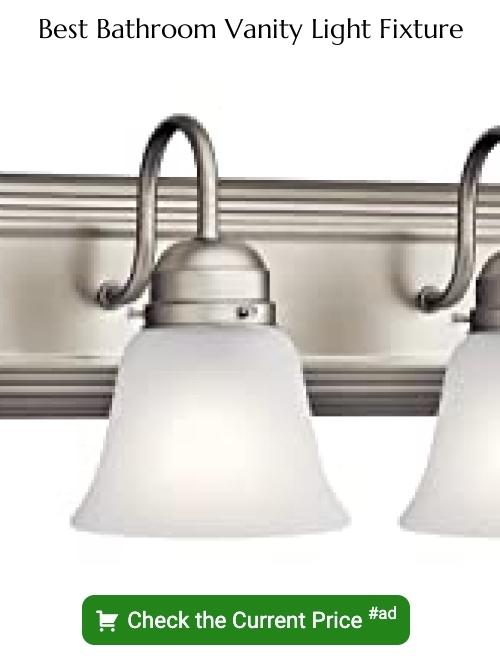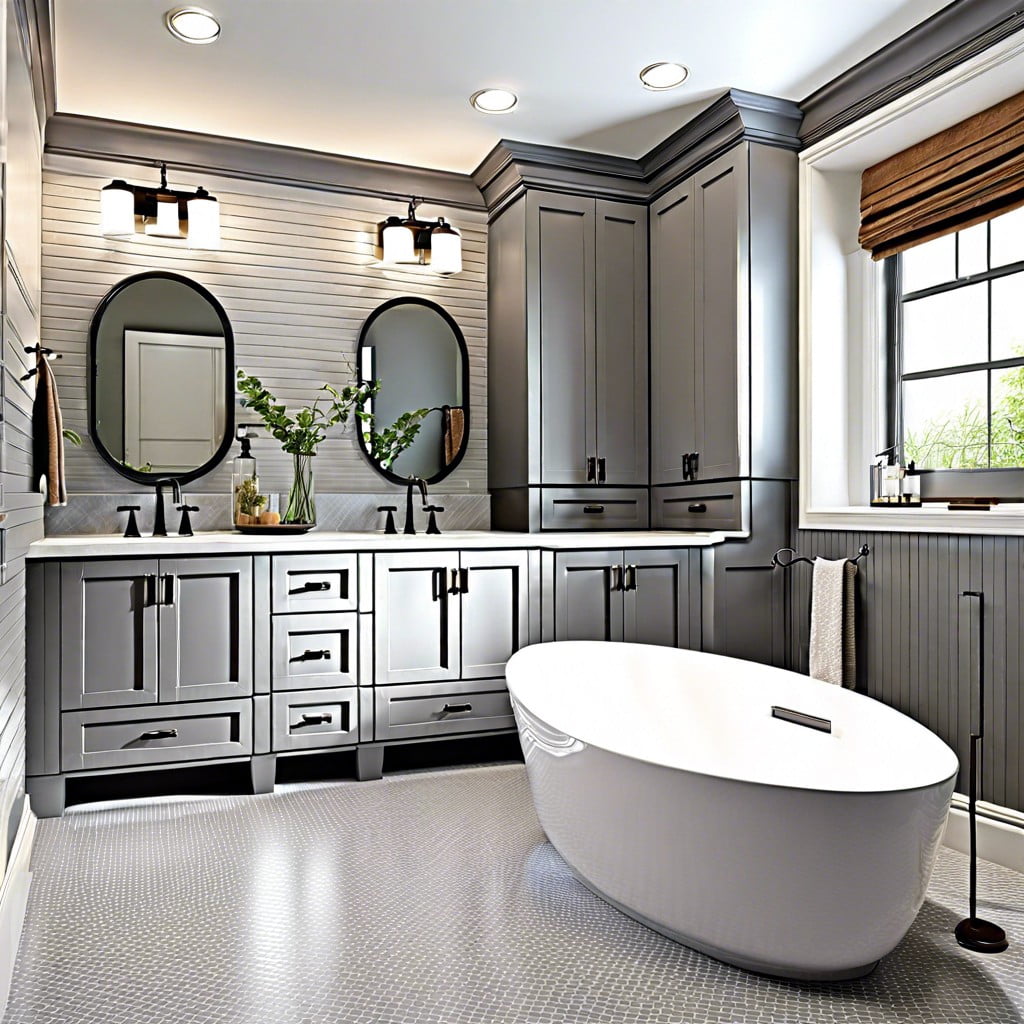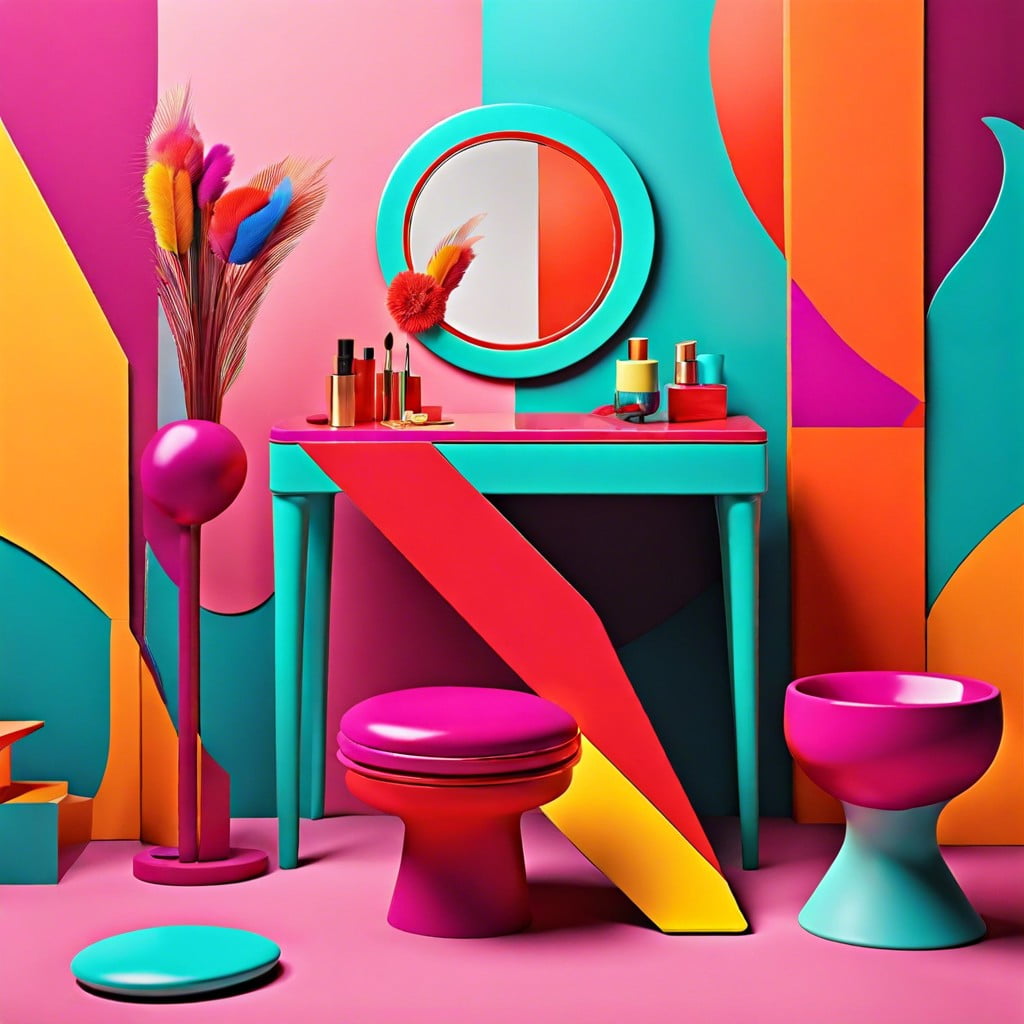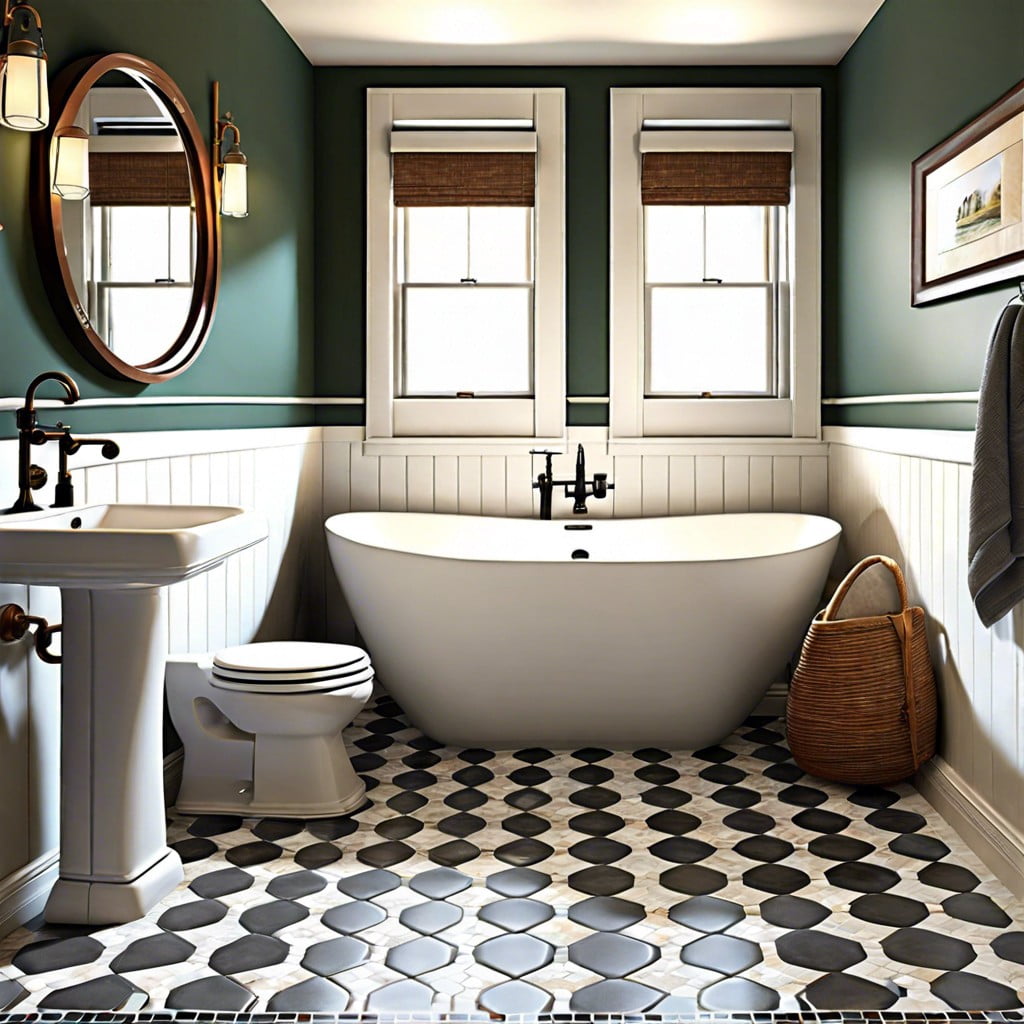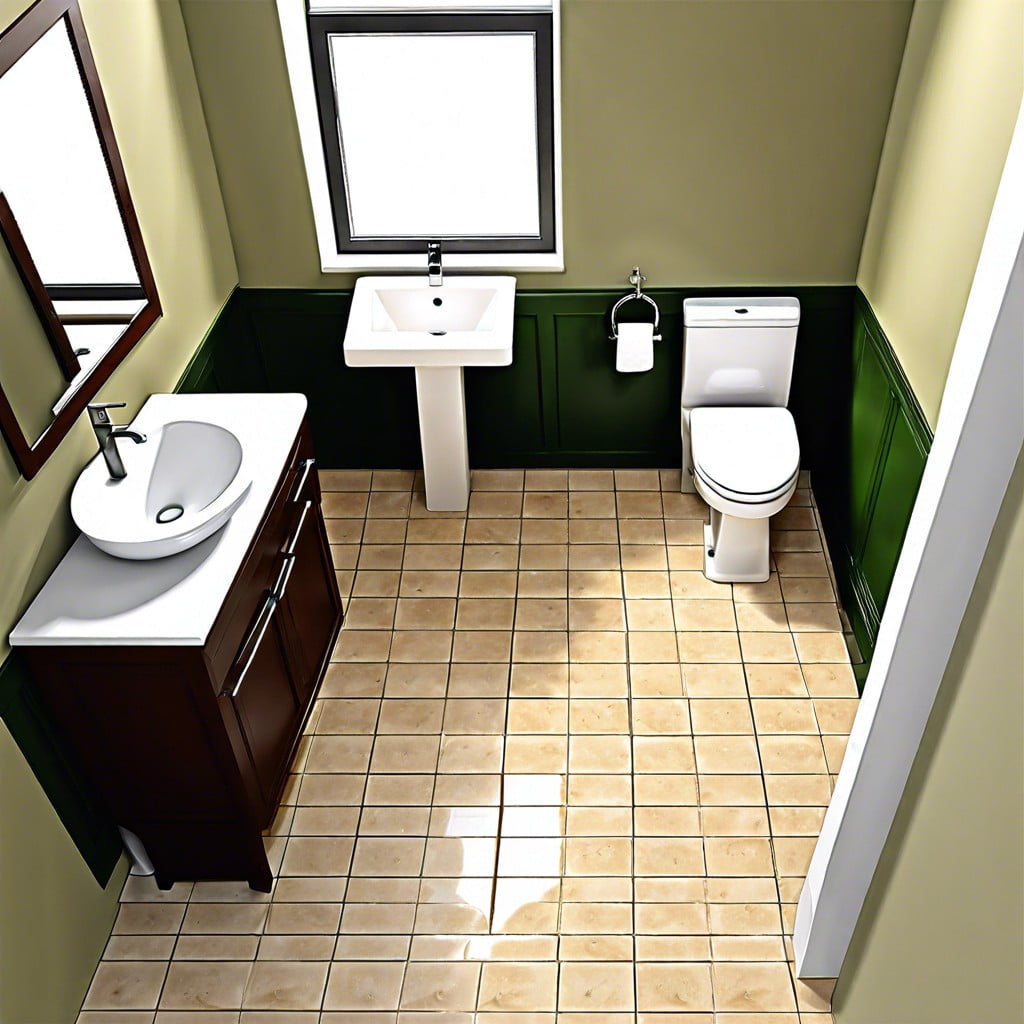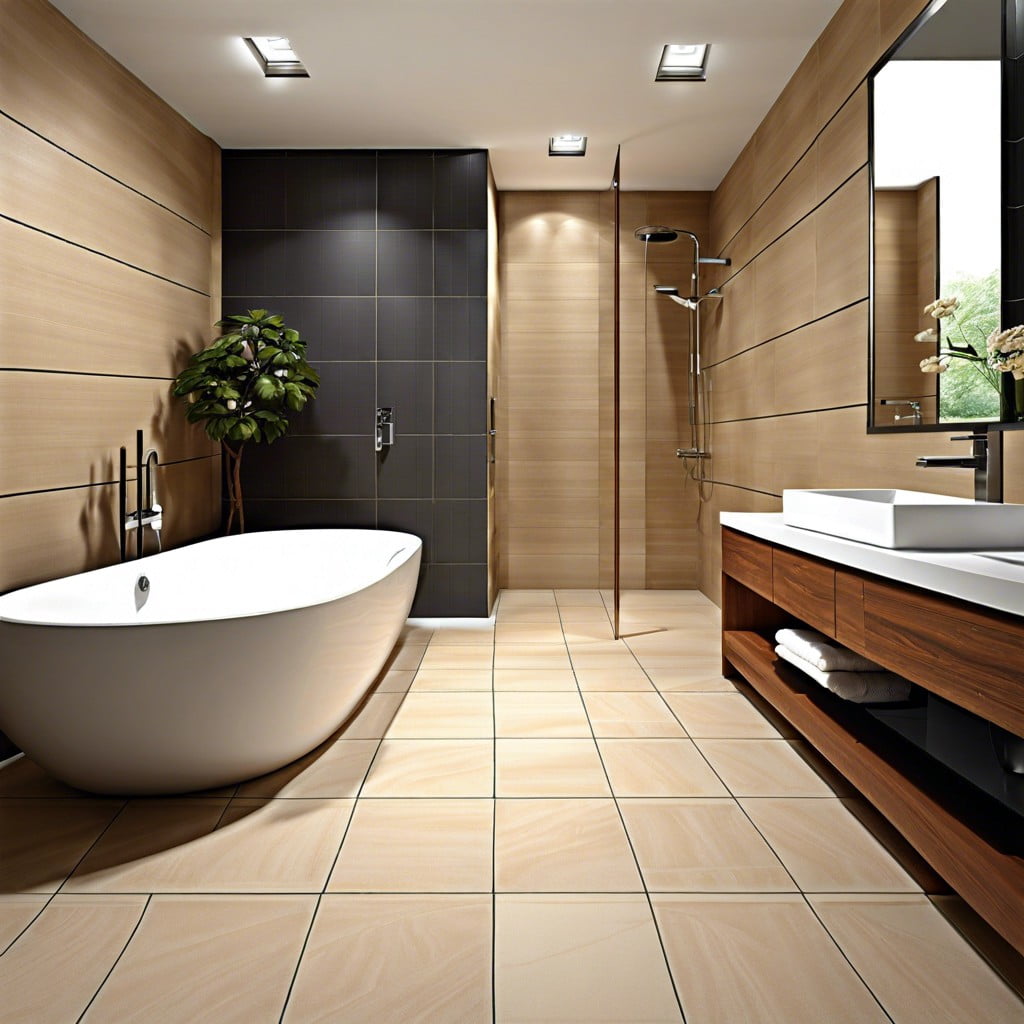Last updated on
Discover how many lumens you need to illuminate your bathroom for optimal brightness.
Key takeaways:
- Lumens measure the brightness of a bulb.
- Consider factors like room size, wall color, fixture placement, and natural light when determining lumens.
- Wet-rated lighting is necessary for shower and bathtub areas.
- Color temperature affects the ambiance and functionality of the bathroom.
- Dimmers can enhance the mood and save energy in the bathroom.
What Is a Lumen, and How Does It Function?
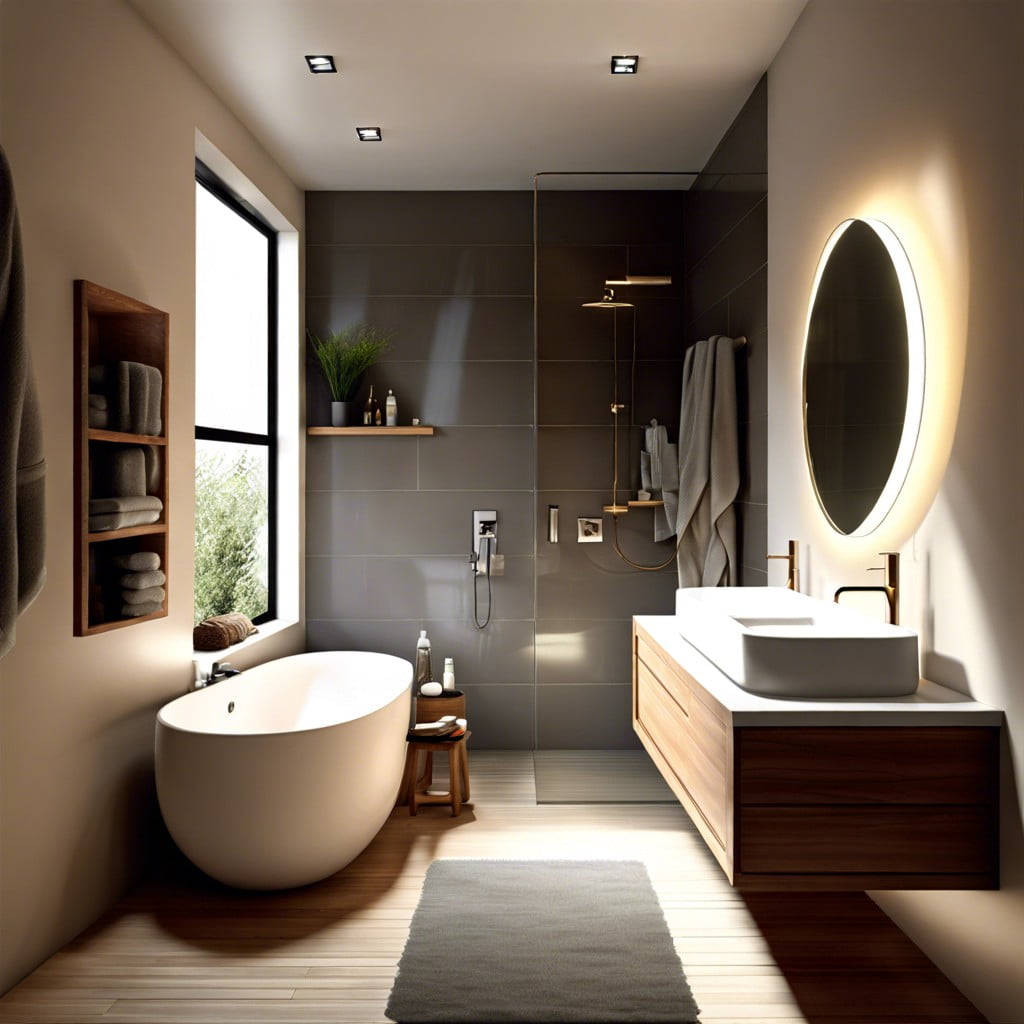
A lumen measures the light output. Think of it as the amount of light beaming out from a bulb, capturing its full glow.
Simply put, higher lumens mean brighter light. Here’s where it gets practical:
If you’re still clinging to your old wattage worship, time to let go. Lumens are today’s hero, measuring brightness rather than energy consumption.
One 800-lumen bulb, for instance, roughly matches a classic 60-watt bulb. Want the feel of an operating theater in your bathroom? Aim higher!
Lumens guide not just how bright the room is, but also how well you see yourself in the mirror—trust me, that’s important.
In a small bathroom? Fewer lumens are fine. A luxurious, sprawling spa-like space? Up those numbers!
Factors Affecting the Lumens in the Bathroom
Different factors can influence how many lumens you’ll need in your bathroom.
First, consider the size of the space. A small guest bathroom needs fewer lumens compared to a large master bathroom. Think of it like comparing a cozy closet to an expansive walk-in one!
Next up, wall color. Darker colors absorb more light, so you’ll need more lumens to avoid that cave-like vibe. On the other hand, lighter colors reflect light, making the space look brighter without extra lumens.
Then there’s fixture placement. Lights above mirrors require different lumens than overhead fixtures. This is because task lighting (think makeup and shaving) needs to be brighter to avoid any “oops” moments in the mirror.
Let’s not forget natural light. If your bathroom has a window, you might get away with fewer lumens. But, unless you’re okay doing your morning routine in the dark on cloudy days, think about a balance between natural and artificial light.
And finally, the type of bulb matters. LEDs might initially seem like overkill, but they’re actually efficient and give better light quality than those ancient incandescent bulbs.
Considering these factors will help you get the perfect lighting for your bathroom, avoiding it looking like either a gloomy dungeon or NASA control room.
Requirement of Wet-Rated Lighting for Shower & Bathtub
So, you’re thinking about lighting up your shower or bathtub. Makes sense! But, let’s keep it safe and snazzy. Here’s what you need to know:
First, moisture and electricity don’t mix well. You need fixtures that can handle all that steam and splashing.
Look for lighting marked “wet-rated.” This means they’re designed to shrug off all the moisture they’ll encounter. No short circuits here!
Placement matters. Overhead lighting should be securely installed and sealed properly to prevent any water ingress.
Consider waterproof LED strips for a modern look. They can be fun and functional, doubling as mood lighting while you’re soaking in the tub.
And, don’t forget the ambiance. Wet-rated doesn’t mean boring; there are plenty of stylish options out there that keep you safe while looking sleek.
Your shower and bathtub areas are ready for their spotlight!
Importance of Color Temperature
Color temperature is the unsung hero of bathroom lighting. It’s measured in Kelvins (K), and it can dramatically affect the ambiance and functionality of your space.
First, warmer tones (2700K-3000K) create a cozy, spa-like atmosphere. Perfect for unwinding with a bath after a tough day.
Second, neutral white (3500K-4100K) is great for everyday tasks. It provides a balanced light that’s neither too harsh nor too soft.
Lastly, cooler tones (5000K-6500K) mimic natural daylight. This is ideal for shaving, applying makeup, or any task requiring precision. Just be careful, though—you don’t want your bathroom to resemble a science lab!
Mix and match these to create layers of light for different activities. There’s no need for your bathroom to feel like a haunted house or an interrogation room. Find your Kelvin comfort zone and bask in perfectly lit glory.
Using Dimmers
Adding dimmers to your bathroom lighting can revolutionize the way you experience this essential space. Here are some bright ideas on why dimmers are a genius move:
Mood Setter: Want a relaxing soak in the tub? Dim the lights to create a spa-like atmosphere. Need to get ready for the day? Turn them up to full brightness.
Energy Saver: Dimming lights reduces energy consumption and extends bulb life. Talk about a win-win!
Customizable: Adjust the lighting to your exact preference. Whether you’re plucking eyebrows or taking a bath, you’ll have the perfect lighting every time.
Late-Night Visits: Popping into the restroom at 2 AM? A dimmed light won’t leave you blinded and wide awake.
Easy Installation: Modern dimmers are user-friendly and can often be installed without needing to call an electrician.
Transform your bathroom from utilitarian to luxurious with the simple twist of a dimmer switch.
Why LED Bulbs Are Best Suited for Bathroom Vanity Light Fixtures
They’re energy-efficient. LEDs consume significantly less power than traditional incandescent bulbs, meaning lower electricity bills and eco-friendly bathrooms. Win-win!
They’re long-lasting. With lifespans stretching 25,000 to 50,000 hours, you’ll probably forget when you last changed a bulb. Imagine all the time you’ll save!
They generate less heat. Unlike those scorching old-school bulbs, LEDs stay cool. This is vital in a small space like a bathroom; no one wants a mini sauna while brushing their teeth.
They offer excellent color rendering. This means you’ll see true-to-life colors, crucial for applying makeup or assessing that new skincare regime. LEDs make you look good literally and figuratively.
They’re versatile. With options for different color temperatures and the ability to dim, you can create the perfect atmosphere for everything from energizing morning routines to relaxing evening soaks.
How Many Lumens for Bathroom Vanity Light?
For a bathroom vanity, the lumens required can vary based on the size of your vanity and the amount of natural light available. But, don’t fret; there are some general guidelines to help!
First, aim for around 70-80 lumens per square foot. If your vanity area is about 4 square feet, you’re looking at roughly 280-320 lumens. Bright enough to see every eyebrow hair, but not so intense you feel like you’re in an interrogation room.
Consider installing multiple light sources. Side lights on either side of the mirror? Genius! They reduce shadows, making sure you don’t leave the house looking like a Picasso painting.
Opt for LED lighting. Long-lasting, energy-efficient, and they make you look fabulous.
Finally, adjustable lighting is a game-changer. A dimmer can transform the space from bright and functional in the morning to soft and relaxing for those nighttime teeth-brushing sessions.
Recap
